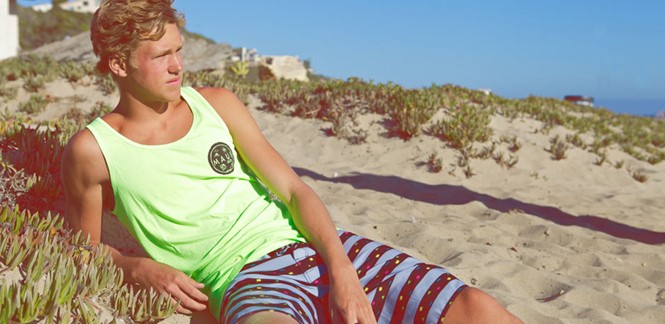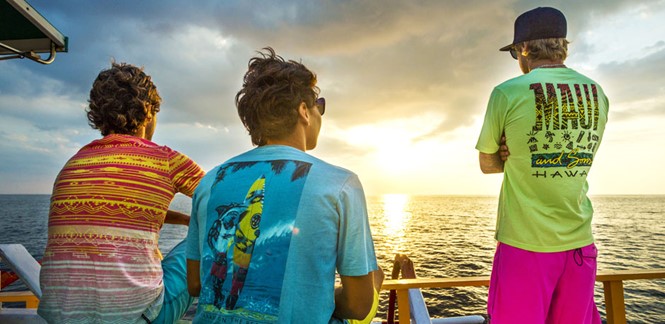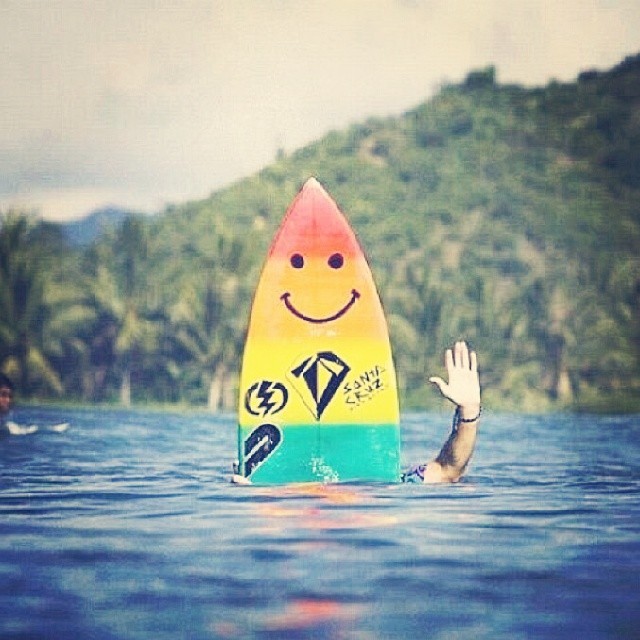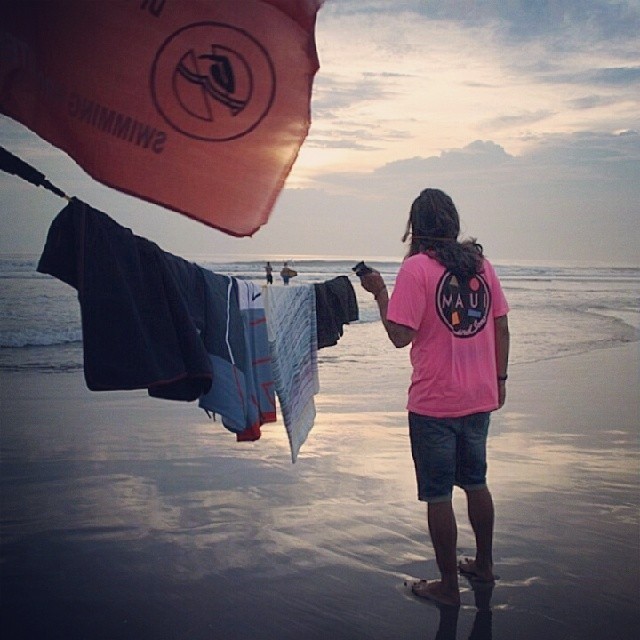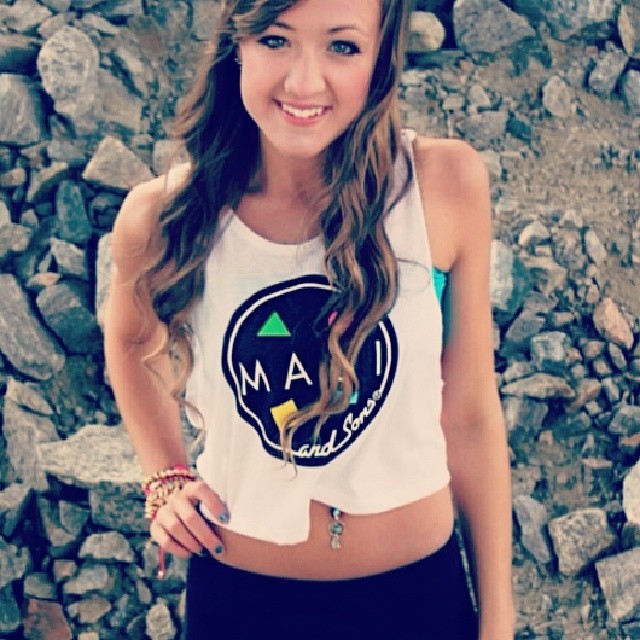Brand profile: Maui and Sons
Surf and lifestyle brand Maui and Sons has employed a brand strategy and design positioning that has allowed it to thrive in a fickle market for three decades. Jeremy Owen reports on the Californian cultural icon
Surfing as an industry is relativity young, but as an activity and lifestyle its roots go back to the ancient island dwelling societies of the Pacific, whose denizens paid homage to their gods of the oceans via the act of ‘wave-sliding.’ Today these rites have been transformed into an international multi-billion dollar industry, the perfect foundation for a commercial enterprise, its potent mix of athleticism, personal expression and spiritualism within a dramatic theater of geophysical elements inspiring strong passions in its enthusiasts.
An emotive element is vital for any successful brand and so in surfing creating a successful brand looks almost guaranteed but as a culture it is notoriously fickle and is dominated by fashions and trends; start-ups with a fresh outlook can rise quickly while the most established brand can fall out of favour almost overnight. To be successful a brand must be considered as being ‘core’ to the market.
Above all the brand’s existence must demonstrate authenticity by putting the sport before commercial activity. This is naturally ensured via a commitment to supplying the best products possible but is also found in activities that give back to the sport, such as event creation, development of new talent via sponsorship or CSR initiatives, in particular ocean related environmental issues.
Judged on performance in a difficult market, California- based Maui & Sons seem to have discovered the secret to longevity. A backbone of the industry for nearly 40 years, the company is still growing while prominent players of a similar age, the likes of Quiksilver and Billabong, have fallen into much-publicised difficulties.
As might be expected from its distinctive neon-coloured logo, Maui & Sons is a product of the 1980s. Unlike many other surf-specific brands, fashion and lifestyle was not the initial mode of business, in fact far from it. The company was founded in 1980 by three young Southern Californian surfers, Jeff Yokoyama, Steve Prested and Rick Rietveld who had an initial idea to start a cookie company, Maui’s Chocolate Chip Cookies, a name derived from Yokoyama’s Hawaiian heritage. As it turned out, entrepreneurial spirit did not translate into natural epicurean talent and the first batch of biscuits baked went up in smoke.
Undeterred, the trio decided that perhaps they should focus their attention on something else. Turning to their passion for surfing for inspiration they reinvented themselves as Maui & Sons, a fashion house for surfing. The brand was launched with a low capital of a few thousand dollars but with a brace of bold ideas built around a staple product of long-legged surfing shorts. Their unique designs were aggressively marketed to southern California’s surf community, with the then unusual step of a large logo (an abstract cookie design featuring symbols for earth, sea, sky and fire, representing the power of nature and creativity) sewn on to the back pocket, a fresh style cue that appealed strongly to the young southern Californian surf community.
By the end of the 1980s, surfing had experienced a global boom, turning from a niche interest into a major moneymaking industry. Maui & Sons rode along with this momentum growing quickly from a small cottage industry to an international cult fashion brand. This rapid growth was tough for the founders. They struggled to meet high levels of demand until Richard Harrington, a successful businessman with a board sports pedigree, came on board to assist.
Harrington had his own skateboard factories in Taiwan and had been selling skateboards into the USA and Europe before the rest of the industry. With some of his customers in Europe now also asking for a surf brand, Harrington approached the company for a licensing deal. He saw potential for Maui to move even more mainstream and purchased the company in 1989, making the critical developments of adding brand licensing alongside the manufacturing activities he expanded operations internationally.
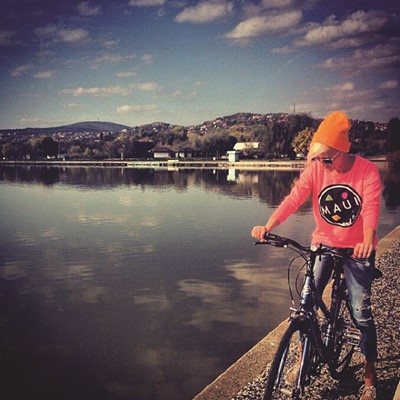
The company currently operates 52 of its own branded stores across the U.S., South America and Canada while its ranges are stocked in over 100 countries worldwide, both in specialist shops and generalist fashion chains such as H&M, Urban Outfitters and TopShop. Maui divides its operations somewhere between 50-50 and 70-30 across licensing and original product manufacture. In so doing, it is able to leverage the brand across a multitude of channels relevant to the action sports market: from apparel, hard goods and equipment, footwear and luggage through to soft drinks.
Throughout all, Maui remains faithful to the brand’s original roots. From the outset, it had a heavy reliance on a potent visual identity. As creative lead, Rick Rietveld defined a house style that was different from anyone else’s at the time. It could be argued that Maui was one of the originators of what has become the visual language for the surf industry as a whole. Today, design is still at the forefront of Maui. Their creative is still rooted in that original concept but with a strong commitment to observing trends within both surfing and fashion they ensure that they remain aligned with contemporary tastes.
This commitment to both brand roots a contemporary focus is illustrated well by its licensing activities. Licensing is often maligned as an easy option but for Maui, licensing offers flexibility and a means of maximising brand equity, but it strongly regulates itself to ensure that its licensing activities to not become generic. Their innovation lies in the application of a brand-building model to licensing.
If the ideal customer for a brand is a staff member, then lifestyle brands lead the way in creating a staff base that is first and foremost comprised of brand ambassadors. The likes of Google and Apple are famously good at this - both rely heavily on nurturing the passion of their employees for the product genre and its end usage. Maui employs a similar approach.
When a collaborator comes on board, but before any design process begins, he or she must undergo ‘Maui-isation.’ This is not a sinister as it sounds, rather the opposite, the licensee is invited to the California HQ to live the brand for a week, attending activities designed to allow them to get fully inside the company heritage and to understand what the brand means for the customers on an emotional level. The licensee emerges with a full understanding designed to ensure the future of the brand. Their education is seen as crucial in that it creates a grounding that can then be fed into the design. The benefit to Maui is that a collaborator now understands the brand at the top level, but can also bring their own expert knowledge of their local market to the table, thus enabling the tailoring of products to maximise the attraction of the product for the customer.
Once a licensee has been Maui-ised they can start to design but Maui keeps control of the artwork at all stages. The licensee is free to design using assets supplied by Maui’s own graphic department and following the brand guidelines, the official document that details exactly how imagery should be used. Once a concept is in place it comes back to Maui as a CAD drawing for approval, a process that sees the designs go around a panel of five to 12 people who must all sign off on the design. There will normally be changes to be done before a second approval round leads to final sign-off. Once a design is approved, the pieces go to a sampling stage where once again Maui views everything to apply a strict quality control. Once the samples are approved, production can begin.
With so many products around, counterfeiting is always a concern, but more challenging is the unofficial goods being produced from factory over-runs. In other words, factories deliberately make more products than in the order to sell on themselves.
To counteract this, Maui employs a simple but effective approach. All official products have a special woven label featuring a registered source code. This ensures that deliberate over- production can be checked as Maui knows exactly how many official units should be in circulation but simple tactics such as mystery shopping wherein brand ambassadors visit stores to look at the goods on sale are also employed; if any goods are found not bearing the official tag the supplier can be easily found and relevant action taken.
Initiatives like these remind us that often the best policy in brand management is to keep things simple. So often as brands grow and develop there is a temptation to over complicate, that success means more processes and more guidelines are needed to protect brand values that have stayed the same. Maui and Sons reminds us that the reverse can also be employed to great effect. Theirs is a business model that maintains a brand that remains authentic to its core market by staying faithful to what was popular and distinctive in the beginning, but in so doing it ensures that the mass market can also enjoy an endless summer.

